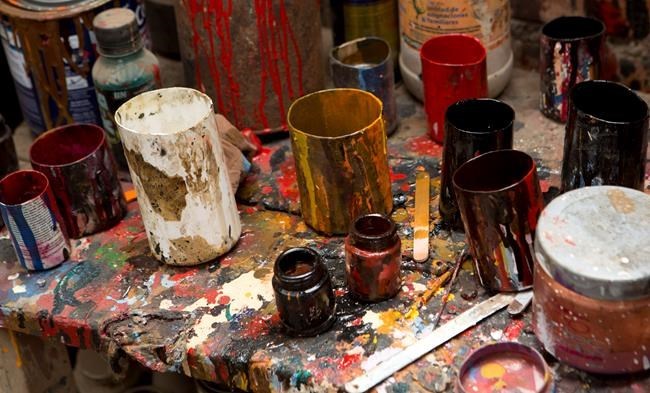
Buckets of paint stand inside the workshop of artisan Ramiro Suxo during the Alasita Fair in El Alto, Bolivia, Wednesday, Jan. 23, 2019. More than 4,000 artisans, 5,000 vendors and about 500 Aymara healers work at the two-week festival that begins every Jan. 24. (AP Photo/Juan Karita)
January 25, 2019 - 8:05 AM
LA PAZ, Bolivia - Artisan Ramiro Suxo puts the finishing touches on little piggy banks shaped like Neymar, Lionel Messi and Cristiano Ronaldo, hoping Bolivians will buy them and fulfil their dreams of becoming international soccer stars.
His hand-painted work is part of the annual Alasitas festival, a pre-Columbian tradition where in modern times Bolivians buy tiny replicas of cars, houses and other things they aspire to have as they strive to improve their lives in South America's poorest nation.
Suxo has been sculpting the dreams of Bolivians at the festival for more than four decades. But he has adapted to modernity.
"Before, people wished for an ox and cow to pull a plow because it meant that they would achieve abundance in their harvest, but now they want to be like Neymar or Messi or they want the little faces (emojis) on WhatsApp," Suxo said at his humble workshop in El Alto, one of Bolivia's largest cities.
The hopeful also buy statues of Ekeko, the Aymara god of abundance. Ekeko is often rendered as a short, pudgy, moustached man who wears traditional Andean clothes and carries baskets of grains. Tiny items, such as kitchen appliances, are taken home and placed around Ekeko, who the Aymara people believe will bless them with better lives in the coming year.
The Aymara word "alasita" means "buy me." More than 4,000 artisans, 5,000 vendors and about 500 Aymara healers work at the two-week festival that begins every Jan. 24.
The festival has spread to northern Chile and Peru and has also been included in UNESCO's list of the intangible cultural heritage of humanity.
"Piggy banks are very important because it's where you save, and that's where you start to dream," said Estela Miranda, a 37-year-old teacher who carried in her hands a small image of Messi and a tiny piggy bank situated among tiny wads of fake dollar bills and euros, as well as miniature apartments, cars and college diplomas.
News from © The Associated Press, 2019